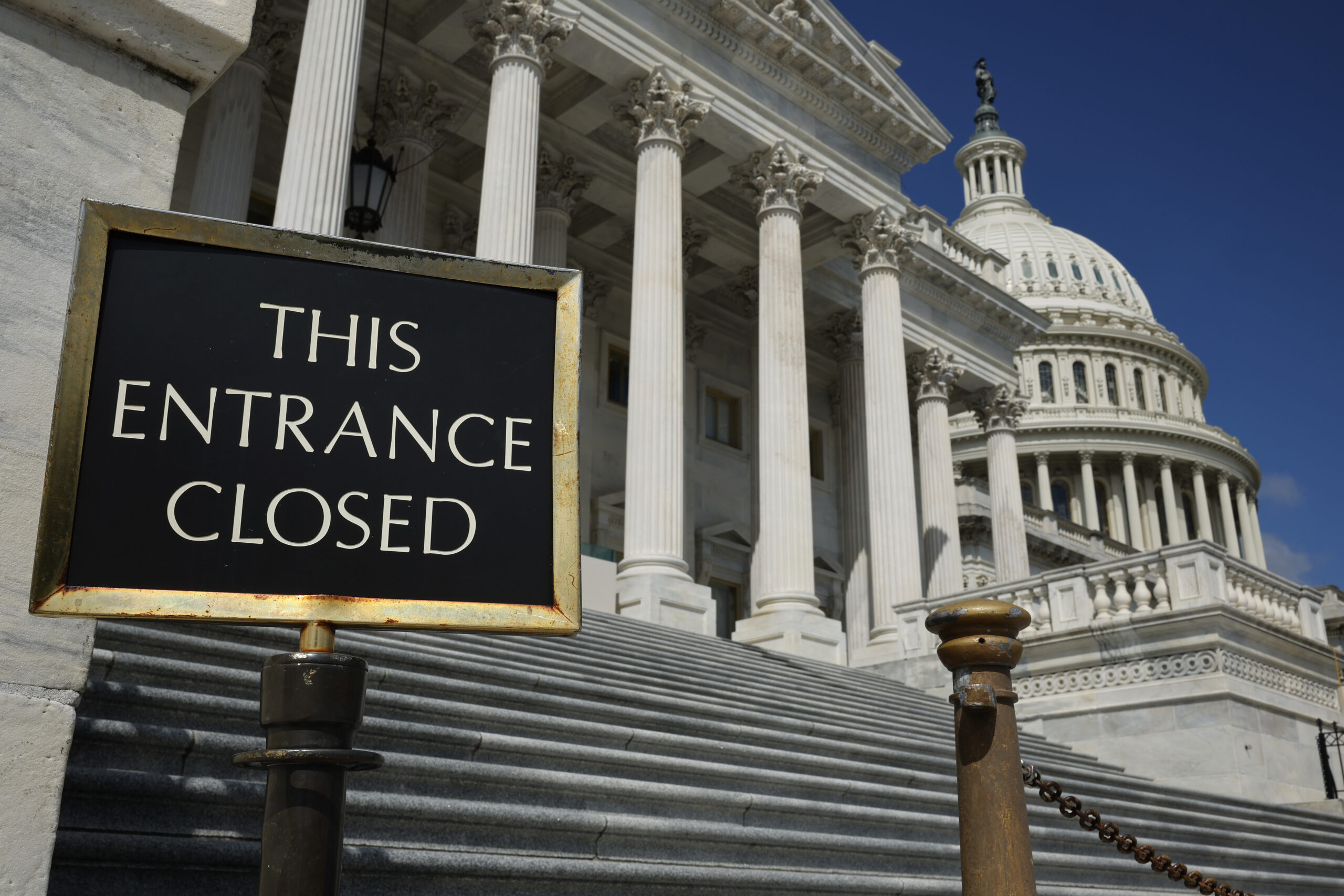Josh Kurtz: Are Hogan’s Coattails Enough for GOP’s ‘Drive for Five’ Senate Seats?

The “Drive for Five” runs through Hogan Country.
But whether Gov. Lawrence J. Hogan Jr. (R) and his fellow Republicans reach their final destination is dependent on countless political variables in the final weeks of this confounding election cycle.
Republicans are hoping to flip five state Senate seats in November, denying Democrats a veto-proof majority for the next four years and strengthening the governor’s political hand measurably if he wins a second term. Democratic strategists concede that they’re likely to lose at least a seat or two.
The Senate battlegrounds, with one exception, are in districts that Hogan carried comfortably in 2014 and where he is all but certain to win again – in some cases, by dominant margins.
But each race has its own dynamic and in each district there is some question about how transferable Hogan’s popularity is.
Some districts have stronger Republican candidates than others. Some have veteran Democratic incumbents who have managed to prosper under tough political conditions. Some have Democrats who may be able to take advantage of countervailing national political trends that suggest this will be a good election for Democrats – Hogan’s strength notwithstanding.
The relative competitiveness of the gubernatorial election in the final weeks could also have an impact on the Senate battlegrounds.
While the Maryland Republican Party and the Senate GOP Caucus have begun spending money in competitive districts, Hogan so far has husbanded his vast resources for his own race. Even though polls show Hogan with a wide lead over former NAACP president Benjamin T. Jealous (D), he has yet to rise above 54 percent in any public survey, meaning he may be hedging his bets in case there’s a late-breaking blue wave – which is conceivable in Democratic-leaning Maryland.
But if the margin between Hogan and Jealous widens in the next few weeks, Hogan – who has already stumped for the Republican nominees in most of the competitive Senate races – may feel comfortable enough to transfer significant resources to the GOP Senate effort.
Republican and Democratic strategists agree that the 42nd District in Baltimore County, where Sen. James Brochin (D) is departing after an unsuccessful bid for county executive, is very likely to swing to the GOP. The district, which stretches from Towson to the Pennsylvania border, is fairly conservative, and Del. Christopher R. West (R) has significantly outspent the Democratic nominee, attorney Robbie Leonard.
The next four Senate races appear to be pure tossups:
District 3 (Frederick County):
Sen. Ronald N. Young (D) has been active in local politics since the early 1970s, and his family has been ubiquitous in Frederick political affairs almost as long – and that could be problematic. The seat is trending Democratic – especially in Frederick City, the anchor of the district – and some Democrats privately wonder whether the 3rd would even be competitive if someone other than Young was their nominee.
The Republican, Craig Giangrande, owns several local Burger King franchises, and he and Young are on roughly equal plains financially. Giangrande has no legislative record for Democrats to run against, but expect them to scrutinize Giangrande’s business practices instead.
Hogan carried the district by 15 points in 2014 and is expected to do well there again. But Hillary Clinton carried the district by 8 points in the 2016 White House election, and if a blue wave materializes, Young will benefit. Young may also benefit from the heavy spending of Democratic congressional nominee David J. Trone, who is running a professional turnout operation.
8th District (Baltimore County):
Sen. Katherine A. Klausmeier (D) is trying to fend off a challenge from first-term Del. Christian J. Miele (R) in a district that takes in communities from Perry Hall to White Marsh. It’s the swingiest of swing districts and the contrast between the candidates couldn’t be more striking.
Klausmeier, 68, has served in the legislature since 1995, and has lived in the district her entire life. Miele, 36, grew up in New Jersey and attended Towson University before moving to the 8th. That’s an undeniable asset for Klausmeier in this particular pocket of the Baltimore suburbs.
Miele is young and energetic, and Klausmeier occasionally seems like she’s out of gas in Annapolis. But back in the district, Klausmeier is a disciplined door-knocking and event-going machine.
Hogan’s popularity will undeniably help Miele. The governor carried the district by 36 points four years ago and there’s no reason to think his victory margin won’t be every bit as robust (Clinton beat President Trump there by 0.7 points in 2016). The Senate Democratic campaign committee recently sent out a mailer that attempted to portray Klausmeier as an ally of Hogan’s.
The 8th District is the home turf of State Insurance Commissioner Alfred W. Redmer Jr., the GOP nominee in the competitive race for Baltimore County executive. That could aid Miele.
The 8th District is also one of four the Maryland State Education Association is targeting to boost turnout for the proposed constitutional amendment to direct all casino proceeds for education. Paid canvassers are hitting voters’ homes promoting a handful of candidates, including Klausmeier, along with the ballot initiative – which has no organized opposition at this point.
30th District (Anne Arundel County):
Another Hogan stronghold, centered in Annapolis, which he won by 28.7 points in 2014 and Trump carried by 0.6 points two years ago.
With veteran Sen. John C. Astle (D) retiring, former Del. Ronald A. George (R), a longtime Main Street Annapolis merchant who has been campaigning for the seat and raising money for several years, should be favored. But the city of Annapolis turned decidedly left in 2017 municipal elections and there seems to be a decent amount of Democratic energy on the ground.
If any candidate in a competitive Senate race is poised to take advantage of a Democratic wave – particularly if women are feeling aggrieved following the confirmation hearing of Supreme Court nominee Brett M. Kavanaugh – it is Sarah Elfreth, the 30-year-old Democratic nominee in the 30th, who is a party and community activist. She will also be helped by the teachers union push for the proposed constitutional amendment.
38th District (Lower Shore):
On paper, this should be the toughest district for Democrats to hold. Hogan carried it by 40 points in 2014, and Trump won it by 28 points in 2016. So voters are predisposed to support Republicans, and the GOP has its strongest candidate in recent memory in Del. Mary Beth Carozza.
But Sen. James N. Mathias Jr. (D), a former Ocean City mayor with a dozen years in the legislature, is nothing if not a political survivor, and he’s got his own political brand separate and distinct from state and national Democrats. Whether that’s enough to get him another four years is very much an open question.
Meanwhile, Republicans have targeted the 32nd District in Anne Arundel County, where Sen. James E. DeGrange Sr. (D) is retiring. It’s classic Hogan territory, a working- and middle-class suburban district that the governor carried by almost 17 points four years ago.
But legislative Democrats generally prosper there, and Clinton won the district by more than 13 points in the most recent White House election.
The GOP Senate nominee, Anne Arundel County Councilman John Grasso, is a well-known maverick who occasionally confounds – and insults – the party establishment. The Democrat, Del. Pamela G. Beidle, owns an insurance business with her husband.
Democrats feel good about their prospects of holding the seat, and the teachers union is also playing there. Republicans haven’t given up. This district could be swayed by last-minute national or statewide political movement, but for now Beidle appears to have the slight advantage.
GOP leaders also believe they have a chance in the 28th District in Charles County. The longtime incumbent, Sen. Thomas M. “Mac” Middleton (D), lost a contentious Democratic primary to accountant and military veteran Arthur Ellis, and Republicans are hoping that Democratic discord will boost their candidate, businessman Bill Dotson.
Hogan lost the district by 4 points in 2014 and Clinton’s margin was a robust 23 points two years ago. The county has become a Democratic stronghold, but Dotson may have a chance.
Democrats are hoping to play offense in two districts – the 9th, in Howard and Carroll counties, where engineer Katie Fry Hester, is challenging Sen. Gail H. Bates (R), and in the 34th, in Harford County, where former Del. Mary-Dulany James (D), is in a rematch with Sen. Robert Cassilly (R), who beat her by 14.5 points in 2014.
Those seem like the longest of longshots, especially with Hogan so popular in both districts – but this election cycle remains very hard to predict.
In 2014, James took 42.7 percent of the vote compared to 57.2 percent for Cassilly. At the same time, Hogan was beating Democrat Anthony G. Brown there by more than 39 points. In the 6th District, in Baltimore County, Republican Johnny Ray Salling beat Democrat John A. “Johnny O” Olszewski Jr. by less than 3 points at the same time Hogan was winning the district by almost 52 points.
Cassilly’s and Salling’s victories were upsets, and that was the narrative coming out of the election – which isn’t necessarily wrong. But looked at another way, James and Olszewski almost won – and that was an incredible achievement considering the political headwinds they were facing.
Democrats will need all their Senate candidates in competitive districts to be the same kind of overachievers this year.




 Creative Commons Attribution
Creative Commons Attribution